If you are in the call center industry, whatever your role is, you are perfectly aware that managing a call center is by no means an easy job – whether it’s managing 10 or 100 agents. And doing it effectively involves much more than simply scheduling agents and monitoring KPIs every once in a while.
Call center management requires strategic vision, the right set of tools, data-driven decision-making, and the ability to motivate people to consistently hit their performance targets, to name just a few critical aspects to pay attention to. All of this, of course, can be overwhelming.
Regardless of your current role in a call center and the level of involvement in managing it, in this blog, we’ve compiled the list of 13 call center management best practices – including those from our own experience – to equip you with all the information you need to know about efficient call center management.
What is Call Center Management?
Before we proceed to best practices and strategies, let’s make things clear first. What exactly does call center management involve? Overall, call center managers and leaders oversee daily call center operations and processes to ensure that everything runs smoothly – and nothing gets overlooked. That may include many different aspects and activities, such as:
- Staffing, scheduling, and onboarding
- Agent training and ongoing coaching
- Setting goals and assigning responsibilities
- Guiding and motivating call center agents
- Promoting agent engagement and retention
- Designing call flows and creating call center scripts
- Tracking and reporting on call center metrics and KPIs
- Measuring call center performance
- Analyzing customer behavior
- Call center forecasting
- Ensuring compliance with laws and regulations
- Optimizing call center processes to improve efficiency
Why is Effective Call Center Management Important?
Given the scope of responsibilities of a typical call center manager, effective call center management is incredibly important. It helps ensure your call center runs as it should, agents are consistently meeting their performance goals, and customer calls are handled in a professional way, which is essential to keeping customers satisfied. Needless to say (but we’ll say it anyway), satisfied customers are the lifeblood of any business.
On top of that, proper management helps you keep agents engaged and motivated, reduce agent turnover rates, and retain agents for the long haul. Considering that it costs between $10,000–$20,000 to replace a call center agent, according to Harvard Business Review researcher Keith Ferrazzi, cost-saving opportunities can be significant.
13 Call Center Management Best Practices and Strategies to Follow
Let’s now explore some best practices and strategies for efficient call center management that you can employ to ensure your call center operates at its full potential:
1. Start off with proper onboarding
It’s vitally important, for sure, to hire people with the appropriate skill set (and mindset) for call center positions. But smart hiring is only a starting point. You want to ensure your new hires get off to a great start, become productive as quickly as possible, and remain part of your team for the long term. And it all starts with proper onboarding. Just take a look at some of these impressive employee onboarding stats:
- Strong onboarding can improve the productivity of new hires by over 70%.
- An effective employee onboarding program can boost the retention of new hires by 82%
- Employees who receive effective onboarding feel 18 times more committed to their organization.
A well-thought-out onboarding process will help your newly hired agents get up to speed faster and reduce churn rates. With features like call whispering, call center supervisors or simply more seasoned team members can provide real-time guidance to newly hired reps during live calls without the customer on the other side hearing anything. That helps improve their confidence.
2. Provide ongoing training and coaching
Ideally, training and coaching should be an ongoing process within your call center. Your agents should always have up-to-date knowledge about your products or services, new features, pricing, latest offerings, or changes in your policies. They should also be trained on how to handle escalations, deal with frustrated customers, and handle complaints. All of that should be part of your call center training – and that’s exactly what will help you ensure your reps deliver excellent customer service experience, maintaining high customer satisfaction levels.

Beyond general training, as a call center supervisor or manager, you should be providing targeted coaching, especially to lower-performing agents. To better understand what your agents are struggling with, you can leverage real-time call monitoring and speech analytics features of your call center software (we’ll talk about it in more detail below).
3. Prevent agent burnout with flexible scheduling
With the fast-paced nature of call center jobs, burnout is a common issue in call centers. Think about the number of calls an inbound call center agent has to handle during a shift. Now think about how many of these are from complaining customers.
Dealing with customer frustration on a regular basis while having to deliver excellent service and maintain high FCR rates and CSAT scores can significantly add to the stress agents experience daily in the workplace. Not to mention extended shifts and call volume spikes. The outcome? Increased call avoidance, burnout, and turnover rates – all leading to higher operational expenses and poor service.
Efficient scheduling can help you overcome these challenges. Proper scheduling serves two major purposes. First, it helps ensure there are always enough agents to handle periods of high call volumes without overwhelming your staff. Second, it helps avoid overstaffing and reduce costs when call volume is law. The goal is to find the right balance, taking into account anticipated call volumes and each agent’s ability to work efficiently without experiencing burnout and exhaustion.
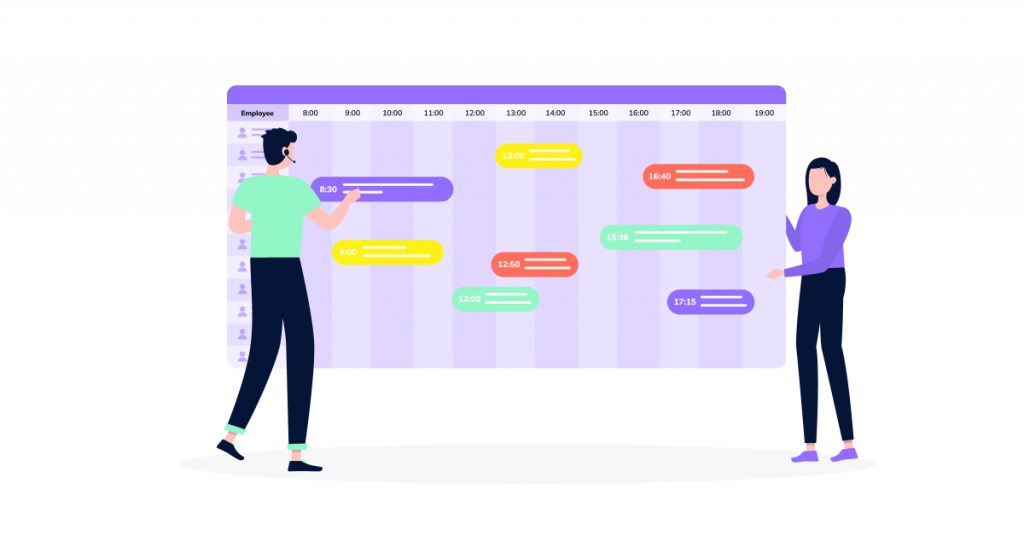
4. Set SMART goals for your call center team
The concept of setting SMART goals for your team isn’t a new one, but it still remains relevant. Why? Simply because it works, whether you manage a call center team or a sales team. To recap, SMART stands for Specific, Measurable, Achievable, Relevant, and Time-Bound. And here’s how it helps you manage your team effectively while ensuring they meet their performance targets:
- S (Specific): When you set specific goals instead of general ones, it helps your reps stay focused on what you’re aiming to accomplish.
- M (Measurable): When your goals are measurable, it makes it easier for your team to track progress towards achieving them.
- A (Achievable): When your goals are achievable and realistic, it helps your agents stay engaged and motivated along the way.
- R (Relevant): Setting relevant goals will help ensure your reps clearly understand why each particular goal is important and how it aligns with your broader objectives.
- T (Time-Bound): When goals are time-bound, it creates a sense of urgency and helps agents stay on track and prioritize tasks effectively.
5. Implement a cloud-based call center environment to support remote work
According to the State of Remote Work Report by Owl Labs, 86% of workers believe that being able to work from home – at least partially – would make them happier, 85% said it would help them maintain a better work-life balance, 81% said it would reduce their stress, and 62% claim they feel more productive when working remotely. These stats prove that remote work is becoming increasingly popular among employees – and call centers are no exception.
With cloud-hosted contact center software like VoiceSpin, you can easily move towards a remote work environment and enable your reps to work from the comfort of their homes. Cloud call centers don’t require any hardware and can be deployed quickly (within days) with no up-front costs. And with features like call monitoring, real-time dashboards, and detailed reporting, you can easily manage your remote agents and keep tabs on their performance no matter where they are working from.
6. Ensure your team is equipped with top technology
Based on the Employee Experience Trends Report 2023 by Zendesk, workplace technology can be a real pain point for employees, with 52% of employees believing that software related to their employee experience is dated or difficult to use.
According to Asana’s Anatomy of Work Index, 60% of a person’s time at work is spent on work about work and not on skilled work. That may include activities like searching for information and switching between apps, among others, which take a significant amount of time away from more meaningful work.
What does it mean for call centers? Fewer interactions with customers or prospects and reduced agent productivity. Considering that over 48% of workers think using the right tech makes them more productive, we’d say that equipping your call center agents with a robust call center software system is a must. Here are a few key features and capabilities of call center software solutions that will improve your team’s productivity and simplify your team management.
- Advanced call routing
Along with Interactive Voice Response (IVR), advanced call routing options are essential for effective inbound call management, especially if your call center typically handles high inbound call volumes. Routing each inbound call to the most relevant call center agent means you can reduce wait times for callers, eliminate call transfers, and improve your FCR and AHT while also improving the experience for your agents.
- Auto dialing
If you manage an outbound call center, you can make your sales reps much more productive and efficient if you equip them with auto dialer software. It can automate and optimize the entire process of placing outbound calls. VoiceSpin’s AI predictive dialer does even more than just that. Its intelligent lead-agent scoring and matching system connects leads to the best-suited sales reps, increasing the probability of making a successful sale and improving your sales conversions.
- Integrations with CRM systems
This is exactly what will help your team eliminate the need to switch between multiple systems and save them precious time and effort in their daily tasks. Integrating your call center software with your CRM system will give agents instant access to customer profiles and history of previous interactions, enabling them to deliver more personalized experiences. E.g., VoiceSpin’s call center software integrates with 80+ CRMs and helpdesk systems, including Zoho, HubSpot, Salesforce, and Zendesk.
- Reporting and analytics
Reporting and analytics features are absolutely critical in call center management. Being able to track your inbound or outbound call center metrics will give you a 360-degree view of your call center performance. It will also enable you to see how individual reps are performing. With comprehensive reports and analytics capabilities, you can make more well-grounded, data-driven decisions about improvements.
To learn more about that, head over to our related article: A Complete Guide to Call Center Reporting and Analytics.
7. Create comprehensive self-service resources, both external and internal
External self-service resources
A Salesforce study revealed that 68% percent of consumers would rather use self-service channels – like knowledge bases or customer portals – for simple questions or issues. With external, customer-facing self-service options, you can empower your customers to source information and resolve at least simple issues independently. That could be anything from detailed FAQs and product guides to how-to videos and community forums. Not only does it help improve customer satisfaction, but it also lightens the load on your team by reducing the number of inbound calls.
Internal self-service resources
Self-service resources are essential for your agents, too. These are not only SOPs (Standard Operating Procedures) with basic instructions but also internal knowledge bases, call scripts, compliance guidelines, troubleshooting guides, or AI agent assist tools – anything that can help your reps resolve customer issues faster and more efficiently. That can ultimately improve your team’s productivity while also enabling them to reduce the Average Handle Time and increase First Call Resolution rates.
8. Master reporting and keep track of vital metrics and KPIs
As a call center manager, you should be regularly and consistently tracking your vital metrics and KPIs to keep tabs on how your team is performing and meeting their performance targets. While there are dozens of call center metrics and KPIs out there, you surely don’t need to track all of them. Below are just a few critical ones that you might want to keep an eye on:
- First Call Resolution Rate (FCR)
First Call Resolution Rate is one of the key metrics to track in inbound call centers. FCR rate basically shows how well your team is able to resolve customer issues during the first interaction – and it’s one of the major drivers of customer satisfaction. In fact, every time a customer has to call back regarding the same issue, customer satisfaction drops by 15%, on average, according to a study by SQM Group.
- Average Handle Time (AHA)
The Average Handle Time, or the Average Handling Time, measures how quickly your reps are able to handle each call, including actual talk times, transfers, hold times, and post-call follow-up activities. Though the average industry standard for AHT is slightly over 6 minutes (which may vary across industries), you should be aiming to reduce your AHT to maintain service quality and customer satisfaction levels.
Read on more about AHT reduction in this blog: How to Reduce Average Handle Time (AHT) in Your Call Center and Improve Efficiency
- Call Abandonment Rate
Call Abandonment Rate will help you measure the operational efficiency of your call center by gauging the percentage of callers who hang up before being connected to a live rep. Zendesk data shows that 72% of consumers expect an agent to respond immediately to their call, which means a high Call Abandonment Rate will negatively impact customer satisfaction. If you can’t provide immediate answers, offering a queue callback option can help you reduce the number of abandoned calls (as well as the number of frustrated callers).
- Customer Satisfaction Score (CSAT)
Customer Satisfaction Score shows how your customers feel after interacting with your brand. Measuring CSAT will help you better understand your customer expectations and how your customers actually perceive your brand and service quality. And what’s more, you can use your CSAT surveys to get actionable feedback from customers by asking them questions like ‘What could we have done differently to make your experience better?’ at the end of your surveys.
- Call Answer Rate
While you can track Call Answer Rate for inbound calls, it’s a particularly important metric for outbound calls too. In an outbound call center, Call Answer Rate (also known as Answer Success Rate or Contact Rate) shows the percentage of attempted outbound calls that are answered by recipients. That allows you to evaluate the effectiveness of your outbound calling campaigns and assess the quality of your lead lists.
9. Use call monitoring and speech analytics to uncover inefficiencies
In addition to consistently tracking important metrics and KPIs, managers and supervisors can immensely benefit from call monitoring. Luckily, real-time call monitoring features are common with most call center software solutions. While tracking FCR, average handle times, and CSAT scores may help you evaluate agent performance, monitoring calls in real time will allow you to better understand the root causes of poor performance, identify training gaps, and refine your coaching.
To get even deeper insights into your customer interactions, you can also take advantage of speech analytics tools. These are AI-driven solutions that employ speech recognition and natural language processing (NLP) technologies to capture actionable insights from human speech. E.g., with VoiceSpin’s Speech Analyzer, you can transcribe calls and generate post-call summaries to better assess agent performance, spot inefficiencies, or gauge customer sentiment through sentiment analysis.
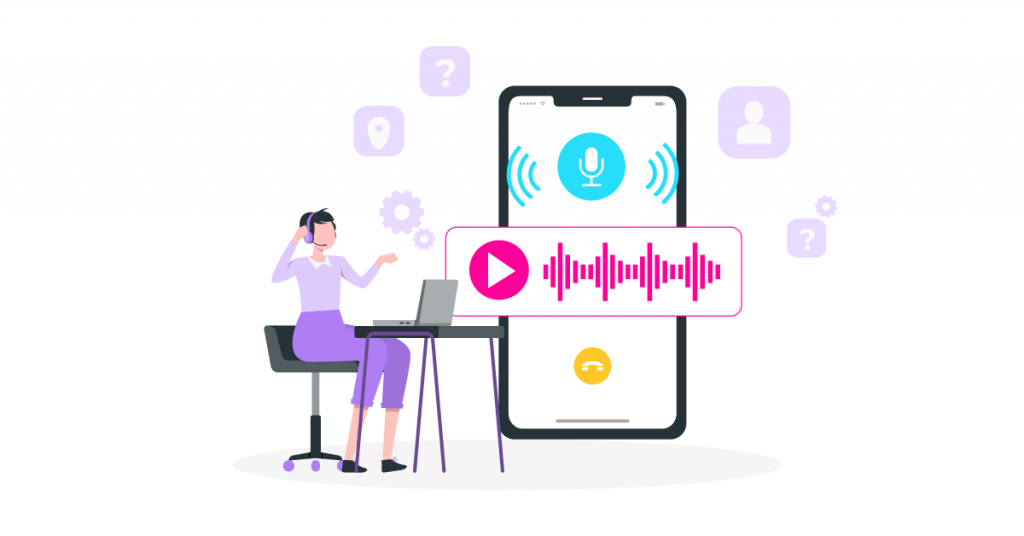
Check out more on speech analytics in this related blog: Speech Analytics in Call Centers: Unlocking the Potential of Voice Data.
10. Have regular two-way feedback sessions
Consistent, meaningful, two-way communication with your team is the foundation of successful contact center management. Your agents have an in-depth view of your processes, which is why they are your most valuable source of feedback. They know exactly what isn’t working and can often make suggestions and recommendations your customers wouldn’t even think of. In fact, according to the State of Employee Ideas survey by Sideways6, 4 in 5 employees have ideas to improve the company they are working at, yet 36% feel their ideas are ignored.
You can collect feedback from your reps in many different ways. Just think of what will work best in your case:
- During team and 1-on-1 meetings
- After each performance review
- Through regular employee surveys
- During stay and exit interviews

One-on-one meetings, in particular, are not only a great way to capture ideas and suggestions from your agents but also an excellent opportunity to give your team members constructive feedback so they can better understand company objectives and their performance expectations. This regular two-way flow of communication can also help you improve employee engagement, which is an important productivity driver.
11. Leverage customer feedback, too
Your customers are another precious source of feedback you can leverage for better call center management. Zendesk’s 2023 CX Trends report found that 73% of consumers will switch to a competitor after multiple bad experiences, while over half will leave after only one poor experience. Collecting customer feedback is the best way to hear the voice of the customer and better understand customer expectations and satisfaction levels. On top of that, asking customer opinions through open-ended survey questions will help you uncover improvement opportunities.
E.g., frequent customer complaints about long hold times along with low FCR rates might reveal that you have a poor call routing strategy. Implementing skill-based routing will ensure that incoming calls are always routed to the best-suited agents who are best equipped to handle their issues. That can increase your FCR rates and reduce the average handle times. In addition, enabling queue callbacks will eliminate the need for callers to wait on hold while also reducing the number of dropped calls.
12. Maintain engagement through one-on-one meetings
We’ve already mentioned this before, conducting regular one-on-one meetings with your team members is not only a great way to give and collect employee feedback and keep open communication with your reps. That’s how you also maintain high engagement levels and improve retention. Let’s now take a closer look at some of the examples of questions you, as a call center manager, can ask your call center agents during 1-on-1s. You don’t need to ask all of them, but you’ll get the idea to set you in the right direction.
- On a scale of 1-10, how satisfied are you with your workplace environment?
- Is there anything holding you back from accomplishing your tasks?
- Have you faced any challenges recently?
- Is there any problem within the team that I might not be aware of?
- Is there anything outside of the office that is negatively affecting your work?
- Are there any additional resources you need access to?
- Do you feel you are getting enough support from me?
- What’s one thing I can do today to better support you?
- What do you think can be done to make you happier in the workplace?
13. Reward excellent performance with meaningful incentives
Regular employee recognition is another best practice for call center management that can help you improve your call center performance – and the one, unfortunately, often overlooked by managers. Why is that so important? Let’s look at the stats. The 2023 Employee Engagement Trends Report by Reward Gateway revealed that 66% of U.S. employees believe their work well-being would improve if they were simply thanked more for their hard work. Moreover, 60% want their employer to increase their investment in employee reward and recognition.
Rewarding your reps, whether for excellent performance or simply for the day-to-day input, can significantly impact their workplace well-being, job satisfaction, and retention. Research from Achievers Workforce Institute found that recognition for their achievements is the second biggest reason for employees to stay with their current employer. If employee recognition and performance incentives aren’t yet part of your contact center management strategy, it’s about time to change that!
Final Thoughts on Call Center Management
All that being said, technology remains the key driver of call center management success. You can have the best people on your team, but without proper technology in place, managing your call center would be nothing but a headache. Fortunately, call center platforms like VoiceSpin can make it much easier for you.
VoiceSpin’s call center solution is entirely cloud-based and has all the capabilities you need to manage your call center effectively. That includes call routing and IVR, call queue management tools, call recording, real-time call monitoring, reporting and speech analytics, workforce management features, extensive integrations with 80+ CRM systems and other business tools, and much more.
Book a demo call now to see VoiceSpin’s call center software in action and learn how it can optimize your call center management and make your reps more efficient and productive.

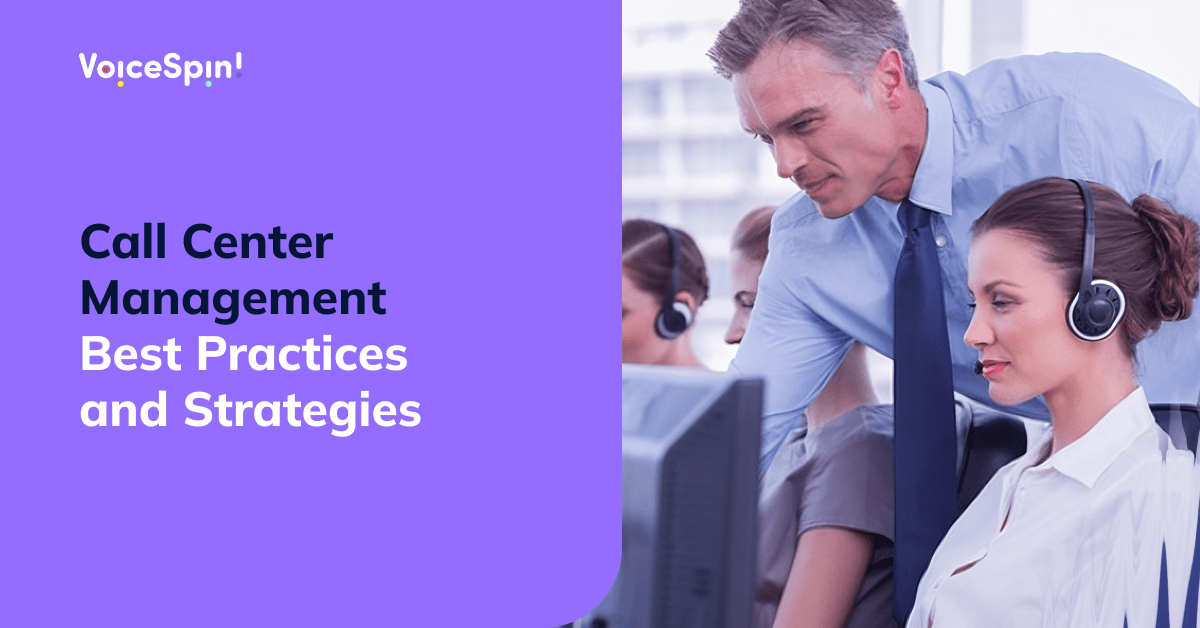
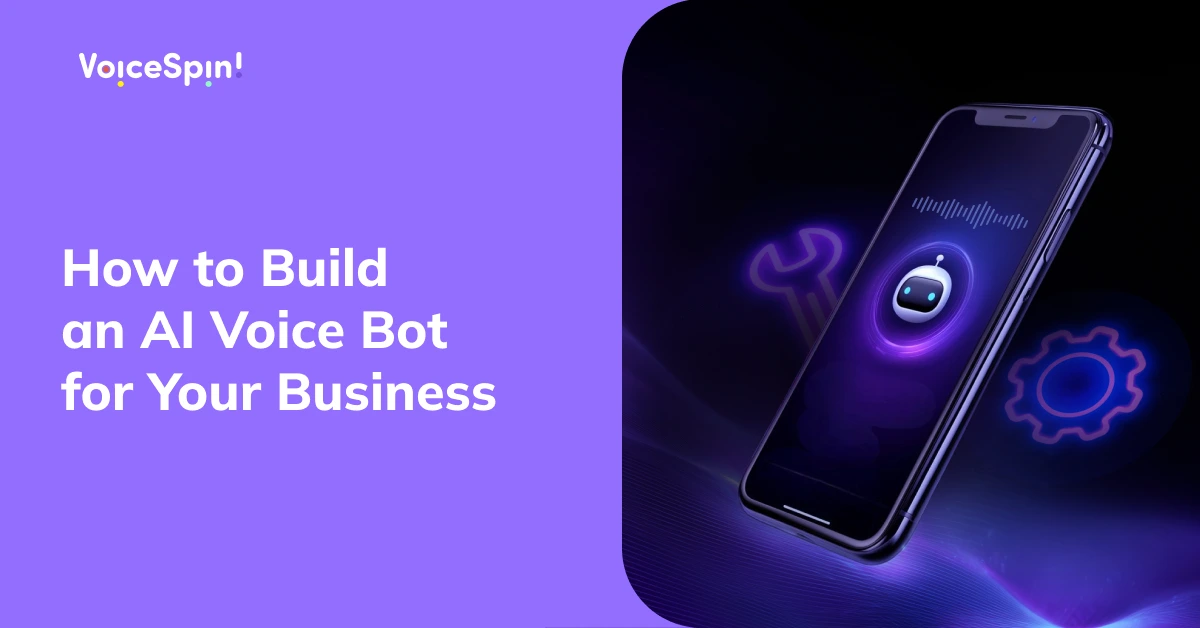

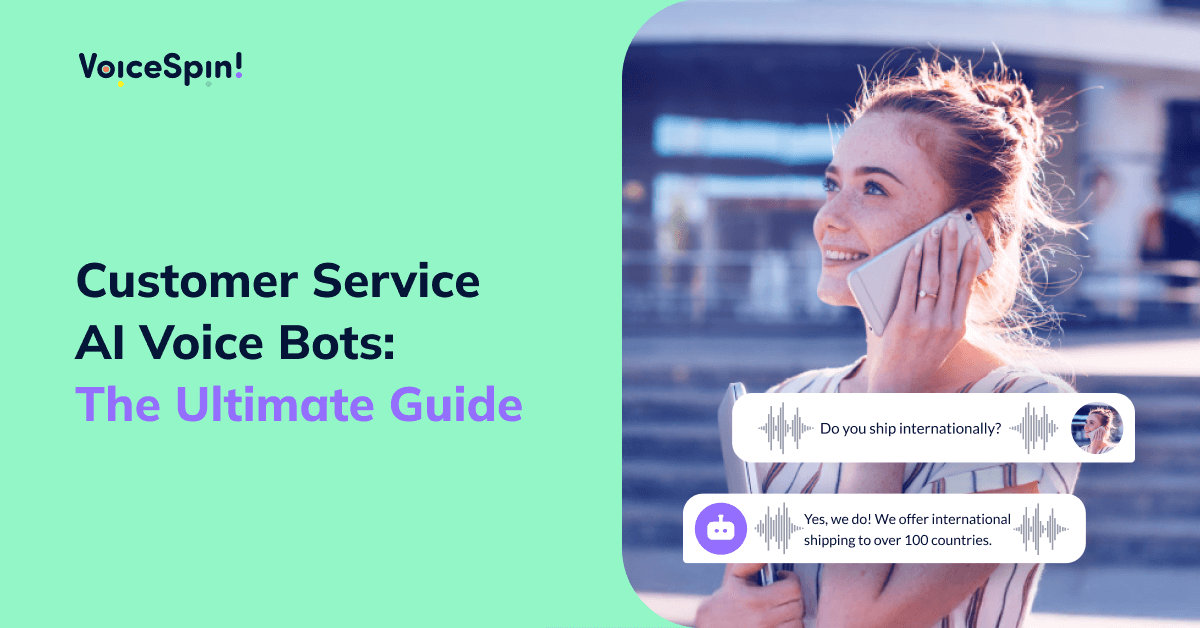
 +18889082995
+18889082995
 +442036084160
+442036084160
 +97237237006
+97237237006